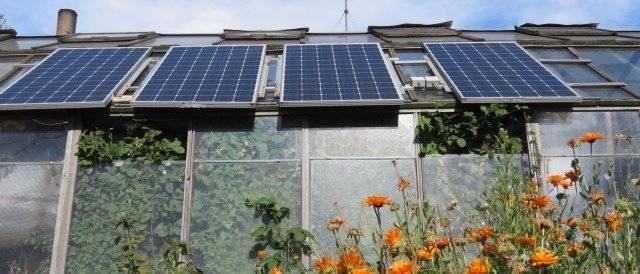Over the past month, Craig Morris has commented on the debate surrounding net-metering (NEM) versus feed-in tariffs (FITs) several times in this blog. Today, he signs out of the discussion by pointing out that neither constitute going off-grid.

As an American living in the EU, I sometimes marvel at the ability of Europeans to adopt best practices from each other. Likewise, I marvel at the tendency of Americans to label foreign best practices un-American.
When a representative of solar organization TASC recently rejoiced on PV Tech at the demise of FITs in Gainesville, he mistakenly described the policy as forcing you “to sell all your energy [he means ‘electricity’] to the utility.” I’ve already talked about why that description is wrong, so let’s focus on the next two sentences:
That’s not an American way of doing business. We have a long history of self-reliance and that’s why net metering is the American Way.
Apparently, Germans are not self-reliant, and their dependence on the nanny state even reaches into energy policy – except that the claim makes no sense. NEM is no more self-reliant than FITs.
NEM is such a bad policy that not even this TASC video can praise it. Here, we learn that net-metering is when “utilities get paid” for the excess electricity to export to your neighbor “even though they didn’t produce it.” The next sentence does not follow, however: “so the solar customer gets fair credit for contributing to local energy supply.” And when the video says that “utilities are monopolies,” it is speaking of the US market. Germany has competition. So if competition is good, the TASC must love Germany.
Take a look at the “solar PV” curves in this chart created by energy expert Bernard Chabot on power production data from March 2013 in California (PDF):
Now compare that curve to data on Germany, you can also visit inverter manufacturer SMA’s website, Agora’s website, and from the EEX power exchange. (Note that the curve for California is available from a French energy expert, not from any official state website.)
In all cases, you will find that solar power production unsurprisingly starts when the sun goes up, stops when the sun goes down, and peaks for a few hours around noon time. Keep in mind that California and Germany have different policies to support solar, but the different laws do not affect the time of solar power production. That depends on the weather, not on the law.
Now let’s apply this to an average household. The parents get up and go to work, and the kids go to school. The kids come home in the afternoon, and the parents are probably also home by suppertime. There is almost no power consumption during the day, when your solar roof produces the most. Whether you use net-metering or feed-in tariffs, you depend on the grid to the same extent.
If you want to be truly self-reliant, you have to go off-grid. Net-metering is a course way of calculating independence; if you produce and consume the same amount, NEM misleads you into thinking you are independent, when in reality you still export almost all of the power you make to the grid and buy most of what you consume back from it – because consumption and production do not take place simultaneously.
By completely uncoupling consumption and production, FITs avoid this confusion. But most of all, they provide true independence – the freedom not only to make your own power, but to receive proper compensation for it. If only more people outside Germany realized the energy freedoms (PDF) that Germans enjoy…
Source: Energy Transition. Reproduced with permission.











